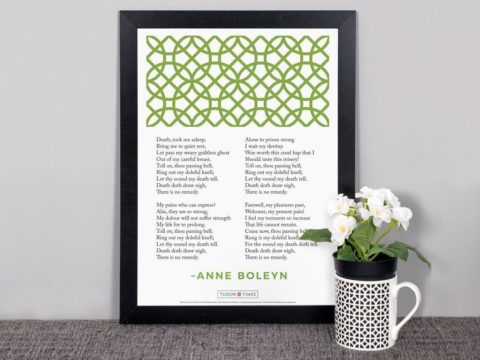Bess of Hardwick: Life Story
Chapter 10 : More Financial Affairs
By 1583, it became apparent that Henry and Grace Cavendish were unlikely to have children. Bess began to look on her second son, William, as her long-term heir. William, who had already been knighted, was altogether more satisfactory than Henry, who, although he had no legitimate children, was so busy that he became known as the ‘common bull of Derbyshire and Staffordshire.’
In 1583, Bess purchased the estate of her late brother, James Hardwick of Hardwick Hall, for her second son. James had died bankrupt, and the estate was sold for £9,500. This was definitely not a bargain for Bess – the income was only £341. She may have overpaid for sentimental reasons, or to maintain family honour by enabling her brother’s debts to be paid. Shrewsbury was unwilling, in Bess’ view, or unable, in actual financial fact, to contribute.
Henry Cavendish was costing Shrewsbury a fortune, he had dowries to find for his daughters, his eldest son, Francis, was in debt, and the money to maintain Queen Mary was insufficient, and often late. Bess too, he complained, was pressing him for money. He was talking of selling his plate (the usual method of storing gold or silver in a time before banks) and his share in a ship ‘The Talbot’ which carried the produce from his northern estates to market in London, and even went on a few (unsuccessful) privateering ventures with Sir John Hawkins.
The Earl had also over-extended himself with his new prodigy house, Worksop Manor. In the fashion of the time, he wished to escape from the dark, mediaeval castles he owned into something like Burghley House, Longleat, or, of course, Chatsworth. The Worksop project was one that Bess and her husband could share – although building projects then, as now, frequently ended in frustration and quarrels after delays and overruns.
These difficulties were compounded when a group of Shrewsbury’s tenants in the Peak Forest walked to London to petition against enclosure of lands and increases in their rents. After the uprisings against enclosures of the 1540s, and the recent Rising of the Northern Earls, Elizabeth and her government tended to look sternly on enclosing (most of her ministers having done all they needed to in that regard many years before). The tenants’ petitions were therefore looked on favourably and the rents were lowered – an embarrassment for Shrewsbury, who felt slighted and unappreciated.
In 1581, Mary was causing more headaches. She had sustained an injury falling from her horse and the Privy Council, hearing her complaints of ill-health, and Shrewsbury’s constant requests for more funds, sent Robert Beale to investigate the situation. Beale spent three weeks questioning the Queen, Shrewsbury, Bess and everyone else he could think of.
Mary complained incessantly of her health, but Bess gave it as her opinion that the Queen was exaggerating – the friendship the two women had shared had definitely cooled. Shrewsbury explained how much money he was losing each year. Beale’s report resulted in some slight relaxation of Mary’s imprisonment but Mary’s own request that Shrewsbury receive the money owing to him was ignored.
Troubles came thick and fast. Early in 1582, Elizabeth Lennox died. In her will, she remembered her stepfather fondly, and committed her daughter to Bess’ care. Shrewsbury wrote to Sir Francis Walsingham that Bess was taking her daughter’s death ‘grievously… she cannot think of aught but tears.’ Both Bess and Shrewsbury quickly requested Elizabeth to continue the £400 per annum allowance for Arbella. Their pleas fell on deaf ears. That summer, Bess’ daughter-in-law, Margaret Kitson, wife of Charles, died just after bearing a son.
Later the same year, Shrewsbury’s eldest son, Francis died, heirless and in debt. Giles was now Shrewsbury’s heir, and the Earl seemed to feel that Bess and her daughter Mary (Giles’ wife) had been ghoulishly waiting for just this outcome. He disliked Mary because he felt she encouraged her husband to support Bess, rather than himself in their disputes.
As the threat from Spain increased in the early 1580s, the pressure to hunt out Catholics also grew. Elizabeth’s original policy of asking no questions if the approved service were attended had not served to resolve matters. The seminary priests and Jesuits who were coming into England were evangelising and giving new strength to the old faith.
Derbyshire was full of Catholic families, many related to Bess – the Foljambes, the Babingtons, the Fitzherberts and the Pierrepoints among them. Whilst Bess herself was Protestant (although she does not seem to have been more than conventionally religious) she cannot have been comfortable with her husband’s increased diligence in searching out Catholics who were old friends.
As Shrewsbury’s money troubles became worse, Bess prospered. She acquired huge tracts of land for her sons in Derbyshire, retaining a life interest for herself. The origin of the capital for these purposes is unclear as her annual income from the lands under the settlement agreed with Shrewsbury in 1572 was only around £2,500. In addition to this life-interest in her sons’ lands, she received an annual allowance from Shrewsbury of £800.
Elizabeth (Bess) Hardwick
Family Tree




